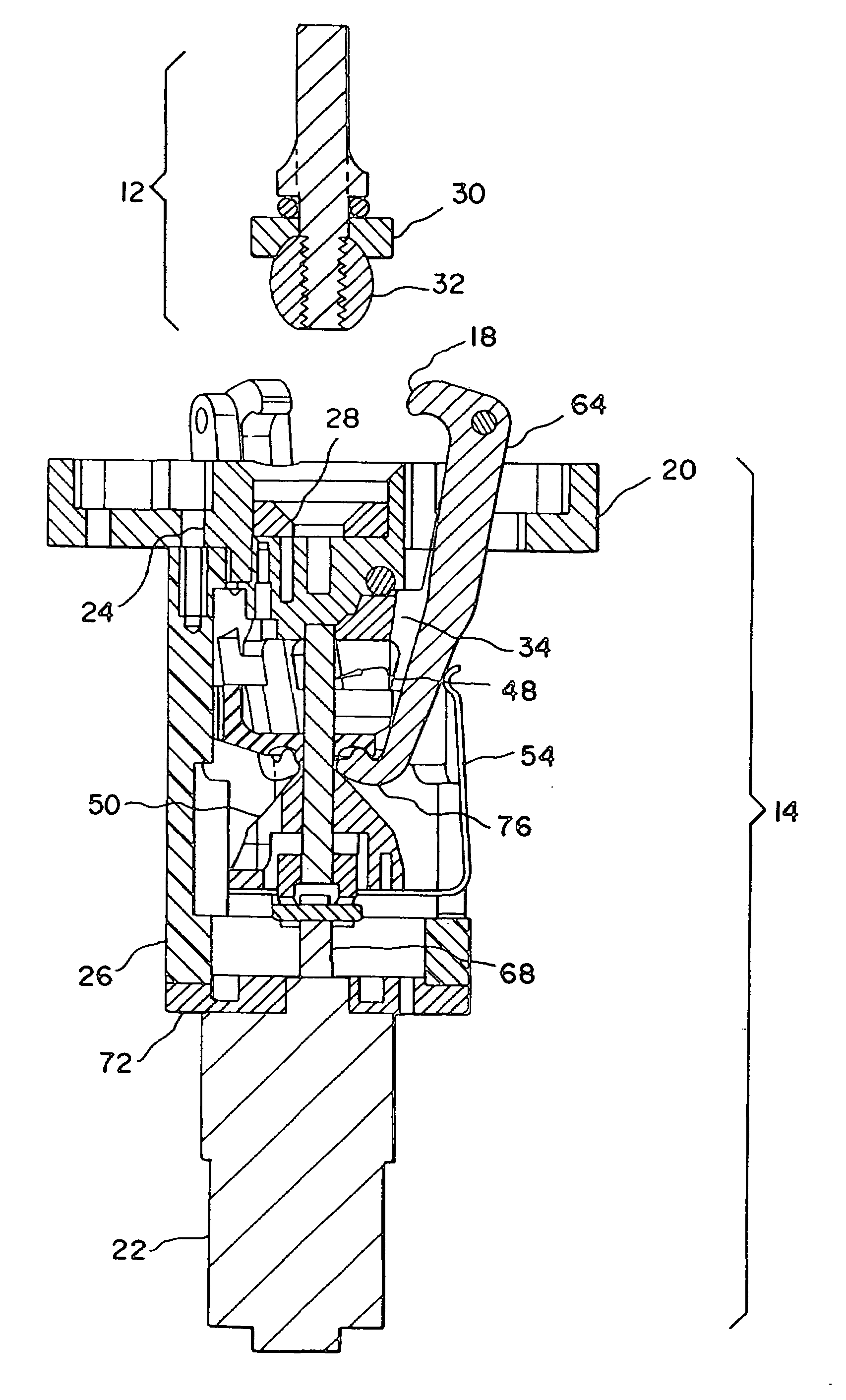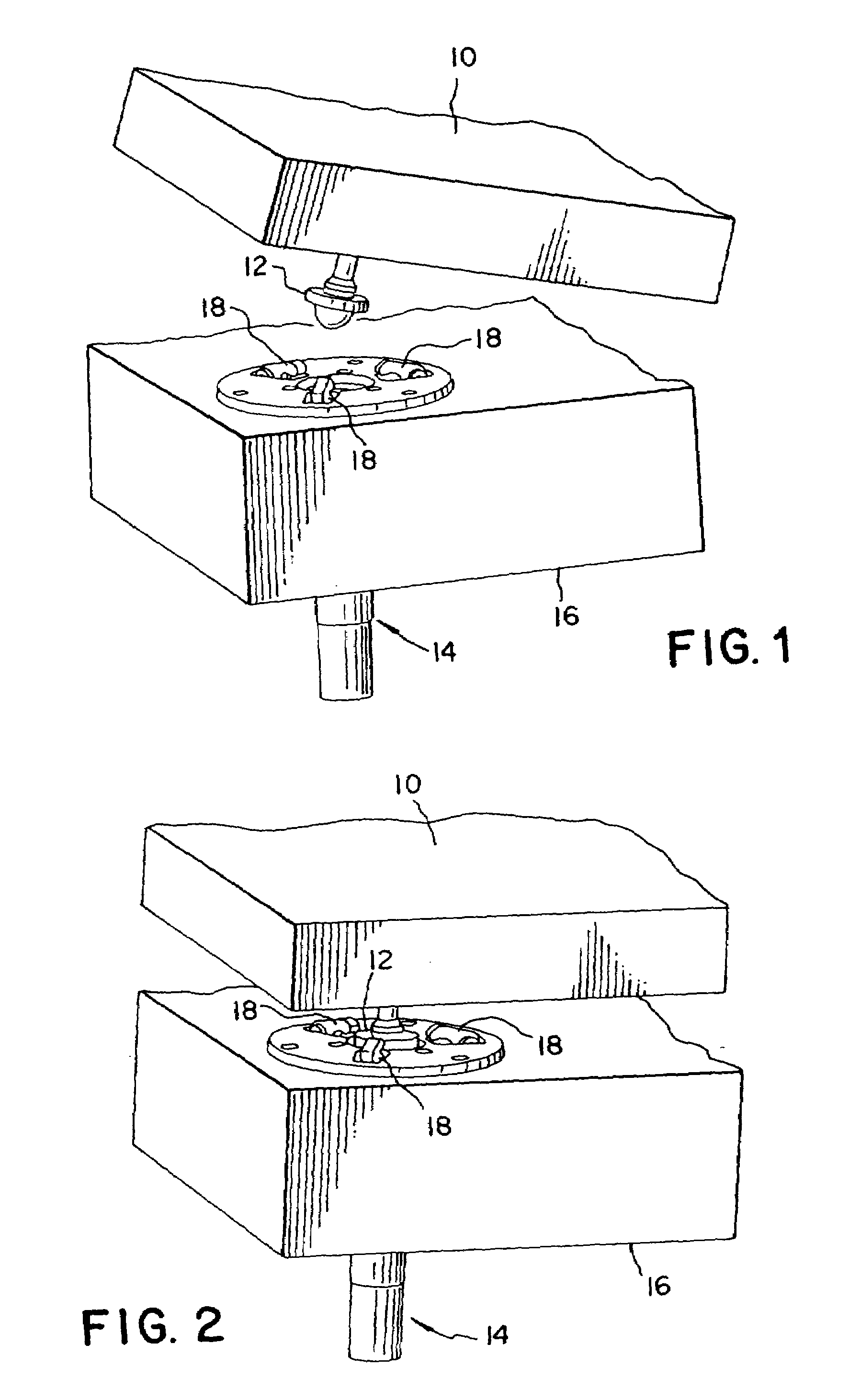High reliability precision latch
a high reliability, precision technology, applied in couplings, instruments, hoisting equipment, etc., can solve the problems of not meeting the needs of high rigidity, linearity, precision, and conventional latching technology for interlocking deployable space telescopes, and achieves high reliability, maintain mirror performance, and high stability.
- Summary
- Abstract
- Description
- Claims
- Application Information
AI Technical Summary
Benefits of technology
Problems solved by technology
Method used
Image
Examples
Embodiment Construction
[0019]The present invention provides a nearly perfect kinematic mount between structural or optical elements and can easily be remotely controlled. Clamping force and drive position feedback can be incorporated to allow controlled closure and continuous force monitoring during and after clamping. A minimum number of moving parts maintains reliability at a value of 0.9994 or better. When in the closed position, the interface consists of a ball captured between two conical surfaces. A novel flexured ball and floating clamp plate is attached to the structure being deployed. The latch base is equipped with a conical seat to accept the ball, and three clamp fingers grip the floating clamp plate once the ball is seated in the socket. A lead screw driven axial cam serves to drive the clamping mechanism into both a clamped and a retracted position. A four bar linkage is formed by the latch cam, coupler link, follower link, and seat. Once the follower link is grounded on the seat, the couple...
PUM
 Login to View More
Login to View More Abstract
Description
Claims
Application Information
 Login to View More
Login to View More - R&D
- Intellectual Property
- Life Sciences
- Materials
- Tech Scout
- Unparalleled Data Quality
- Higher Quality Content
- 60% Fewer Hallucinations
Browse by: Latest US Patents, China's latest patents, Technical Efficacy Thesaurus, Application Domain, Technology Topic, Popular Technical Reports.
© 2025 PatSnap. All rights reserved.Legal|Privacy policy|Modern Slavery Act Transparency Statement|Sitemap|About US| Contact US: help@patsnap.com



